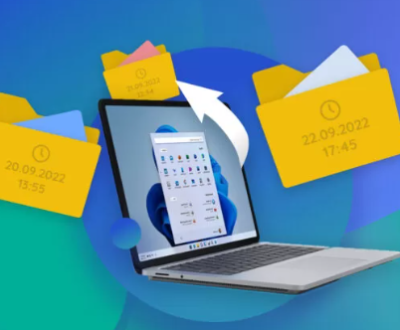Formatting may seem like an irreversible action, but understanding the recovery process can significantly increase your chances of retrieving those precious photos.
Steps to Recover Pictures from a Formatted SD Card
Step 1: Stop Using the SD Card
The moment you realize you’ve formatted your SD card, stop using it immediately. This means avoiding taking new photos, saving new files, or performing any operations that could overwrite the existing data. This is the most critical step in maximizing your recovery chances.
Step 2: Choose the Right Recovery Software
Panda Assistant is a powerful data recovery software designed to help users retrieve lost or deleted files from various storage devices, including hard drives, SSDs, USB drives, and SD cards. With a user-friendly interface, it caters to both beginners and advanced users, offering features such as quick and deep scanning modes to ensure comprehensive file recovery. Panda Assistant supports a wide range of file formats, making it versatile for recovering documents, photos, videos, and more.

One of its standout features is the ability to recover files from formatted drives, giving users hope even after accidental formatting. The software also provides a preview function, allowing users to verify the integrity of recoverable files before proceeding with the restoration process. In addition, Panda Assistant is equipped with a powerful algorithm that enhances the chances of successful recovery, even in challenging scenarios like data corruption or accidental deletion.
Step 3: Install and Launch the Recovery Software
Once you’ve selected and downloaded your recovery software, follow these steps:
Install the Software: Run the installer and follow the on-screen instructions. Ensure that you install it on a different drive, not the formatted SD card.
Launch the Application: Open the recovery software once installation is complete. Most tools will provide a straightforward setup that guides you through the recovery process.
Step 4: Scan the SD Card
Now it’s time to scan your formatted SD card for recoverable files. Here’s how to do it:
Select the SD Card: In the recovery software, you will typically see a list of available drives. Select your formatted SD card from the list.
Choose the Scan Type: Most recovery programs offer two types of scans: a quick scan and a deep scan. While a quick scan might find recently deleted files, a deep scan will thoroughly analyze the drive and locate files that may have been lost during the formatting process.
Start the Scan: Initiate the scanning process. Depending on the size of your SD card and the recovery software’s capabilities, this process may take anywhere from a few minutes to several hours.
Step 5: Preview and Select Recoverable Files
After the scan is complete, the software will present you with a list of recoverable files:
Browse Through the Results: Look through the results to find the images you wish to recover. Many software options provide a preview feature, allowing you to view the files before recovery.
Select the Files: Check the boxes next to the pictures you want to recover. It’s advisable to select files you are sure are intact and worth recovering.
Step 6: Recover the Files
Once you’ve made your selections, proceed with the recovery:
Choose a Recovery Destination: When prompted, select a location to save the recovered files. This should be a different drive than your SD card to avoid overwriting any remaining data.
Start the Recovery Process: Click the recover button to begin the restoration. The software will extract the files and save them to your chosen location.
Check the Recovered Files: Once the recovery is complete, navigate to the designated folder to ensure your pictures have been successfully retrieved. Open the files to verify their integrity and quality.
Additional Tips for Successful Recovery
Use the Right Card Reader: If you’re recovering files from an SD card, ensure you’re using a reliable card reader. Sometimes, issues with the reader can hinder the recovery process.
Regular Backups: To avoid data loss in the future, consider implementing a regular backup routine. Cloud storage services or external hard drives can provide peace of mind.
Avoid Quick Formats: If you frequently use your SD card, be cautious about quick formatting. Opt for a full format only when necessary, as this provides a better chance of recovering files later.
Check for Physical Damage: If your SD card shows signs of physical damage (like cracks or electrical issues), it may require professional data recovery services. Avoid trying to fix it yourself, as this could lead to further data loss.
Recovering pictures from a formatted SD card is a manageable task as long as you act quickly and use the right tools. By stopping the use of the card immediately, selecting reliable recovery software, and following the recovery steps carefully, you can often retrieve your lost memories. Remember to always back up your data regularly to prevent future loss. With the right precautions and recovery strategies, you can navigate the challenges of digital storage and safeguard your valuable images.
About us and this blog
Panda Assistant is built on the latest data recovery algorithms, ensuring that no file is too damaged, too lost, or too corrupted to be recovered.
Request a free quote
We believe that data recovery shouldn’t be a daunting task. That’s why we’ve designed Panda Assistant to be as easy to use as it is powerful. With a few clicks, you can initiate a scan, preview recoverable files, and restore your data all within a matter of minutes.
Subscribe to our newsletter!
More from our blog
See all postsRecent Posts
- How to restore deleted images 2025-06-30
- How to restore a deleted file on windows 2025-06-30
- is there any way to restore deleted photos 2025-06-30

 Try lt Free
Try lt Free Recovery success rate of up to
Recovery success rate of up to









